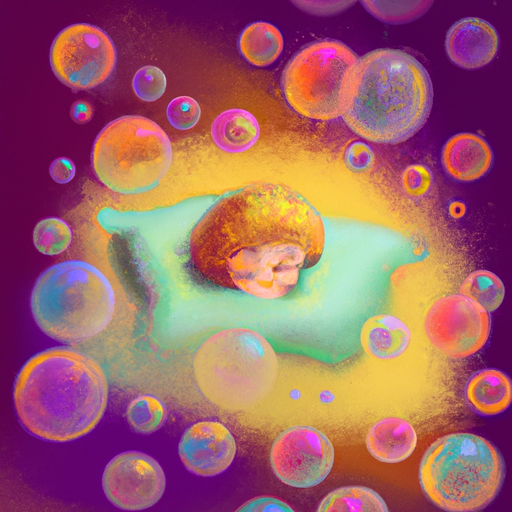Sleep is essential for the overall health and well-being of individuals, especially children. However, many children experience sleep disorders that can significantly impact their quality of life and development. In this article, we will delve into the world of sleep disorders in children, exploring their symptoms, causes, and diagnosis. We will also discuss effective treatment options and strategies for managing these disorders. Additionally, we will provide insights on how to support and promote healthy sleep habits in children, emphasizing the importance of prevention and management. By understanding and addressing sleep disorders in children, we can ensure they receive the restorative sleep they need for optimal growth and development.
1. “Understanding Sleep Disorders in Children: Symptoms, Causes, and Diagnosis”
Sleep disorders in children can have a significant impact on their overall health and well-being. Understanding the symptoms, causes, and diagnosis of these disorders is crucial in order to provide appropriate treatment and support for affected children.
One of the most common sleep disorders in children is insomnia, which is characterized by difficulty falling asleep or staying asleep. Children with insomnia may experience excessive daytime sleepiness, irritability, and difficulties with concentration and memory. Other symptoms can include frequent nighttime awakenings, fear of bedtime, and resistance to going to sleep. Insomnia in children can be caused by various factors, including anxiety, stress, irregular sleep schedules, or underlying medical conditions.
Another sleep disorder that commonly affects children is sleep apnea. This condition involves interruptions in breathing during sleep, leading to fragmented sleep and decreased oxygen levels in the body. Symptoms of sleep apnea in children can include loud snoring, gasping or choking during sleep, restless sleep, and excessive daytime sleepiness. This disorder is often caused by enlarged tonsils or adenoids, obesity, or structural abnormalities in the airway.
Restless leg syndrome (RLS) is a sleep disorder characterized by an uncomfortable sensation in the legs, often described as aching, tingling, or crawling. Children with RLS may experience an irresistible urge to move their legs, especially during periods of rest or at bedtime. This can significantly disrupt their ability to fall asleep and maintain a restful sleep throughout the night. RLS in children can be caused by genetic factors or underlying medical conditions.
Diagnosing sleep disorders in children can be challenging, as their symptoms may overlap with other behavioral or medical conditions. However, a thorough evaluation by a healthcare professional specializing in sleep medicine is essential. The diagnosis often involves a detailed medical history, physical examination, and sometimes the use of sleep studies or monitoring devices to assess sleep patterns, breathing, and brain activity during sleep.
Treatment for sleep disorders in children depends on the specific diagnosis and underlying causes. In some cases, simple lifestyle modifications and sleep hygiene practices can significantly improve sleep quality. For example, establishing a consistent bedtime routine, creating a comfortable sleep environment, and promoting relaxation techniques before bed can be beneficial. In other cases, medical interventions may be necessary. These can include medication, surgical interventions to correct structural abnormalities, or the use of devices such as continuous positive airway pressure (CPAP) machines for sleep apnea.
Sleep disorders in children should not be ignored or dismissed as a normal part of childhood. They can have long-lasting effects on a child’s development, behavior, and overall quality of life.
You can find out more about this theme here: https://bbgate.com/media/mephedrone-synthesis.55/.
2. “Effective Treatments for Sleep Disorders in Children: Exploring Options and Strategies”
Effective Treatments for Sleep Disorders in Children: Exploring Options and Strategies
Sleep disorders in children can significantly impact their overall well-being and development. It is essential for parents and healthcare professionals to identify and address these disorders promptly. Fortunately, there are various effective treatments available that can help alleviate sleep disturbances and improve the quality of sleep in children.
1. Behavioral Interventions:
Behavioral interventions are often the first line of treatment for sleep disorders in children. These interventions aim to modify specific behaviors and routines to promote healthy sleep patterns. Some commonly used behavioral strategies include:
a. Sleep hygiene practices: Establishing a regular sleep schedule, maintaining a calming bedtime routine, and creating a comfortable sleep environment can significantly improve sleep quality in children.
b. Stimulus control therapy: This technique helps children associate their bed and bedroom with sleep by limiting activities such as playing or watching TV in bed.
c. Relaxation techniques: Teaching children relaxation techniques, such as deep breathing exercises or progressive muscle relaxation, can help them unwind and prepare for sleep.
d. Sleep restriction therapy: This approach involves limiting the time children spend in bed to match their actual sleep duration, gradually increasing it as their sleep improves.
2. Pharmacological Treatments:
In some cases, when behavioral interventions fail to improve sleep disorders or when the condition is severe, pharmacological treatments may be considered. Medications should only be prescribed and administered under the guidance of a qualified healthcare professional. Commonly prescribed medications for sleep disorders in children may include:
a. Melatonin: Melatonin is a hormone naturally produced by the body to regulate sleep-wake cycles. Supplementing with melatonin can help regulate the sleep-wake cycle in children with sleep disorders.
b. Sedative-hypnotics: These medications promote sleep by inducing drowsiness and relaxation. They are usually prescribed for short-term use and under close medical supervision.
3. Cognitive-Behavioral Therapy (CBT):
Cognitive-behavioral therapy is a therapeutic approach that focuses on identifying and modifying negative thought patterns and behaviors associated with sleep disorders. In children, CBT can be effective in addressing underlying anxiety or behavioral issues that contribute to sleep disturbances.
4. Medical Interventions:
In certain cases, medical interventions may be necessary to treat sleep disorders in children. These interventions are typically reserved for severe sleep disorders or those caused by physical conditions. Medical interventions may include:
a. Adenotonsillectomy: This surgical procedure involves the removal of enlarged tonsils and adenoids, which can obstruct the airway and contribute to breathing difficulties during sleep.
b. Continuous positive airway pressure (CPAP) therapy: CPAP therapy is often used to treat sleep apnea in children.
3. “Supporting Healthy Sleep Habits in Children: Prevention and Management of Sleep Disorders”
Ensuring healthy sleep habits in children is crucial for their overall well-being and development. By focusing on prevention and management of sleep disorders, parents and caregivers can play a vital role in promoting optimal sleep in children. Here are some key strategies to support healthy sleep habits in children:
1. Establish a Consistent Sleep Schedule: Setting a regular sleep schedule is essential for children. This means having consistent bedtimes and wake-up times, even on weekends. Maintaining a consistent routine helps regulate their body clock and promotes better sleep.
2. Create a Relaxing Bedtime Routine: A calming bedtime routine signals to children that it’s time to wind down and prepare for sleep. Activities such as reading a book, taking a warm bath, or listening to soothing music can help relax their minds and bodies, making it easier for them to fall asleep.
3. Foster a Sleep-Friendly Environment: Creating a sleep-friendly environment is crucial for children to have restful nights. Ensure the bedroom is cool, dark, and quiet. Consider using blackout curtains, white noise machines, or earplugs to minimize distractions that may disrupt their sleep.
4. Limit Exposure to Electronic Devices: The blue light emitted by electronic devices like smartphones, tablets, and televisions can interfere with sleep. It’s important to establish screen time limits and encourage turning off devices at least an hour before bedtime. Instead, engage in quiet activities like reading or storytelling.
5. Encourage Regular Physical Activity: Regular physical activity during the day helps children expend energy and promotes better sleep at night. Encourage active play, outdoor activities, or participation in sports to ensure they are physically tired by bedtime.
6. Monitor and Regulate Caffeine Intake: Consumption of caffeine, found in beverages like soda or energy drinks, can disrupt sleep patterns in children. It’s crucial to monitor their caffeine intake and avoid it altogether, especially close to bedtime.
7. Address Underlying Medical Conditions: Sometimes, sleep disorders in children can be a result of underlying medical conditions such as sleep apnea or restless legs syndrome. If your child consistently struggles with sleep despite following healthy sleep habits, consult a healthcare professional who specializes in sleep disorders.
8. Seek Professional Help if Needed: If sleep problems persist or become severe, it may be necessary to seek professional help. Pediatric sleep specialists can conduct a thorough evaluation and provide appropriate diagnosis and treatment options tailored to your child’s specific needs.
By following these strategies, parents and caregivers can help prevent and manage sleep disorders in children, ensuring they get the restorative sleep necessary for their growth and development. Remember, maintaining healthy sleep habits is a lifelong skill that will benefit children throughout their lives.


